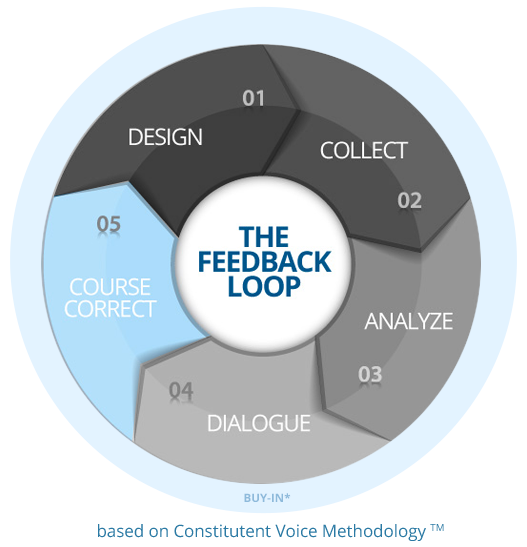 Welcome to Feedback Fundamentals. In this series, we’ll be getting back to the basics and highlighting what it means to “close the loop.” Whether you’re well versed in the jargon or new to the feedback community, this series will introduce you to ideas, frameworks, tools and approaches that we believe are essential for a strong feedback practice. Feedback Fundamentals is all about building a strong foundation and realizing a vision of listening to the people you seek to serve.
Welcome to Feedback Fundamentals. In this series, we’ll be getting back to the basics and highlighting what it means to “close the loop.” Whether you’re well versed in the jargon or new to the feedback community, this series will introduce you to ideas, frameworks, tools and approaches that we believe are essential for a strong feedback practice. Feedback Fundamentals is all about building a strong foundation and realizing a vision of listening to the people you seek to serve.
Last time, we examined dialogue—the step in which you look for patterns and information in the feedback data you’ve received. In this article, we examine the final step — course correct.

Congratulations! You’ve reached the last step in the feedback loop – course correction! Course correcting is changing your actions in line with the feedback you’ve received. Course corrections can involve major shifts in strategy or easy but important adjustments to how you work. What’s important is that you thoughtfully consider the feedback you’ve heard, what it means to the people who gave it to you, and what you and others in your organization can do about it.
There are many ways to course correct, depending on what you’ve heard and what you can do about it.
How you course correct will depend on how strong the buy-in to the feedback process is from different stakeholders.
It will depend on your organizational resources. And of course it will depend on what feedback you heard. The trick is to be honest about what level of course correction is possible – ideally before you even collect the feedback!
Course correction can be a challenging step. It can be difficult to hear tough feedback, and our reaction may be to avoid thinking about what we’ve heard, much less course correcting based on it! It can help to be conscious of the emotional responses you have to feedback. Perhaps remind yourself and others of the major gains and improvements in outcomes that can come when you course correct based on feedback. And remember that you don’t always have to follow every piece of feedback you receive, once you’ve listened to and understood it.
Feedback is a gift – you don’t display every housewarming gift you receive on your mantelpiece, and likewise you don’t have to immediately act in accordance with every piece of feedback you’re given.
However you decide to course correct, It’s essential to let people know what you’re doing. We often forget that people may not realize when we are listening to them and acting on their feedback. Letting people know what you did based on their feedback can help build trust and motivation to give feedback the next time you ask for it. Letting people know how you course corrected based on their feedback can help build a richer conversation. At Feedback Labs, we like to let people know What You Said and What We Did. Simple methods are ok.
As you close your feedback loop, just remember – feedback is an ongoing conversation. Constant adjustment is key. So now that you’ve closed one feedback loop, get ready to start another one!
If you’d like to learn more about the benefits of feedback visit our webpage on why feedback matters.






